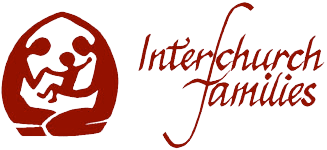Ministry to Interchurch Marriages
Ministry to Interchurch Marriages
A National Study
New Book - July 1999
Ministry to Interchurch Marriages: A National Study is a report on a national study of interchurch marriages, that is, marriages in which each spouse belongs to a different Christian denomination or church. The study was conducted by an interdisciplinary team at the Center for Marriage and Family, Creighton University.
It demonstrates that the relationship between religion and marriage, both interchurch and same-church, can be either positive or negative, and highlights the differences and similarities between interchurch and same-church marriages. It provides an in-depth examination of religiosity, underscores the experiences of church among interchurch and same-church individuals, reports on a surprisingly high rate of change of religious affiliation among interchurch couples, analyzes marital stability and satisfaction, and deals with parenting and family of origin issues.
The book is an essential resource for individuals in interchurch relationships, for those who work with married and engaged couples, both interchurch and same-church, and for those who provide, design, or conduct programs for couples. The findings offered in this study point toward strategies to help interchurch couples, and all married couples, build successful marital and religious lives.
The Center is directed by Michael G. Lawler, Ph.D., the Amelia and Emil Graff Chair in Catholic Theological Studies at Creighton, a Catholic and Jesuit university in Omaha, NE. Lawler is the author of numerous books and articles on marriage and family. Barbara Markey, ND, Ph.D., is co-director of the Center, director of the Family Life Office for the archdiocese of Omaha, and co-author of FOCCUS, a pre-marital inventory used in marriage preparation across the United States and in other countries.
Because differences in religiosity were so pervasive, and had such an impact on the religious lives of both interchurch and same-church couples, the Center for Marriage and Family is developing an instrument, BRIDGE (Building Religious Interaction, Decision makinG, and Enrichment) for use in marriage preparation and enrichment programs.
To order a copy of this book (US $10.00 per copy), visit the Center for Marriage and Family web site:
http://www.creighton.edu/MarriageandFamily/.
or send completed order with your name, address, number of copies requested, and total payment to:
Center for marriage and Family
Creighton University
2500 California Plaza
Omaha, NE 68178
For more information about the study, or for costs to mail outside the United States, call (402) 280-2908, or email Gail Risch gailr@creighton.edu, Associate Professor at Creighton University.
Contents, key terms, and scales employed, are outlined below.
Table of Contents
Key
Terms
Scales
TABLE OF CONTENTS
Acknowledgements3Key Terms4Executive Summary7Context: Religion, Marriage, and Family9One: Design and Analysis13Two: Religiosity20Three: Toward a Taxonomy of Interchurch Couples35Four: Experience of Church68Five: Change of Religious Affiliation77Six: Marital Stability and Marital Satisfaction87Seven: Parenting Issues115Eight: Family of Origin121Nine: Comparison of Married and Divorced Respondents126Ten: Summary of Findings and Implications139Appendix A: Questionnaires145Appendix B: Demographics168Appendix C: Frequencies and Chi-squares174References215
KEY TERMS
Couple Church Type: Interchurch
Interchurch A relationship in which each partner belongs to a different Christian denomination or church.
IC denotes a relationship which began at engagement and continued throughout marriage as interchurch.
Same-Church
A relationship in which both partners belong to the same Christian denomination or church. Same-church relationships are subdivided into:
SC denotes a relationship which began at engagement and continued throughout marriage as same-church;
IC-to-SC denotes relationships which began as interchurch and later became same-church when one or both spouses changed religious affiliation;
All-SC denotes the combination of SC and IC-to-SC relationships.
DivorceEither the separation of the spouses or the legal dissolution of their marriage. In this study, divorce includes those who are separated.Family of OriginThe family in which one was primarily raised.ReligiosityA term referring to religious and/or spiritual behaviors and attitudes.
In this study religiosity is measured by the following scales and variables: Religious Behaviors Scales (which embraces the Personal Faith and Personal Church Involvement Subscales), Joint Religious Activities Scale, sense of belonging to a local church, strength of denominational identity, religion as a strength in the marriage, respondent’s emphasis on religion in raising children, spouse’s emphasis on religion in raising children, commitment to Christ, and adult religious education.
Sample:
Married Sample
Respondents who were married at time of interview (N=1285).Divorced Sample
Respondents who were divorced or separated at time of interview (N=227).Combined Sample
A combination of the married and divorced samples (N=1512).
Scales:
Acceptance of Other ReligionsA scale composed of three acceptance variables: 1) the churches you grew up in taught you to accept other religions; 2) the town or neighborhood you primarily grew up in taught you to accept other religions; 3) the family you grew up in taught you to accept other religions.CohesionA scale composed of three cohesion variables: 1) engage in outside interests together; 2) work on projects together; and 3) talk about daily events with each other.CommunicationA scale composed of four communication variables: 1) you can easily share thoughts and feelings with your husband/wife; 2) your husband/wife can easily share thoughts and feelings with you; 3) if faced with differences, you and your husband/wife can compromise; and 4) if faced with differences, you and your husband/wife can respect one another.Joint Religious ActivitiesA scale composed of six religious activities that a married couple might do together: 1) attend church; 2) attend a Bible study or religious education; 3) serve or work on a church project or committee; 4) participate in church-sponsored social activities; 5) pray; and 6) discuss religious matters.Personal Church InvolvementA Subscale of the Religious Behaviors Scale composed of five church involvement variables: 1) attend a church worship service; 2) attend a Bible study or religious education activity; 3) serve or work on a church project or committee; 4) participate in a church-sponsored social activity; and 5) give financial support to a church..Personal FaithA subscale of the Religious Behaviors Scale composed of five personal faith variables: 1) spend time in private prayer; 2) read the Bible or other religious material; 3) base one’s actions or decisions on one’s faith; 4) discuss faith with others; and 5) help others as an expression of one’s faith. Religious BehaviorsA scale composed of the ten religious variables contained in the Personal Faith and Personal Church Involvement Subscales.Religious CommunicationA scale composed of four religious communication variables: 1) you can easily share your thoughts and feelings about religion with your husband/wife; 2) your husband/wife can easily share thoughts and feelings about religion with you; 3) if faced with religious differences, you and your husband/wife can compromise; and 4) if faced with religious differences you cannot resolve, you and your husband/wife can respect one another.Religious DifferencesA scale that examines religious differences in seven areas: 1) what you consider to be right and wrong; 2) the church teachings you believe in; 3) your beliefs about what it means to be saved; 4) the importance of attending church; 5) your religious practices; 6) the importance of the Bible; 7) the importance of prayer.
Hits: 2852

